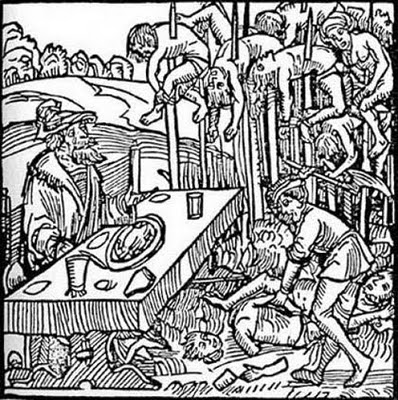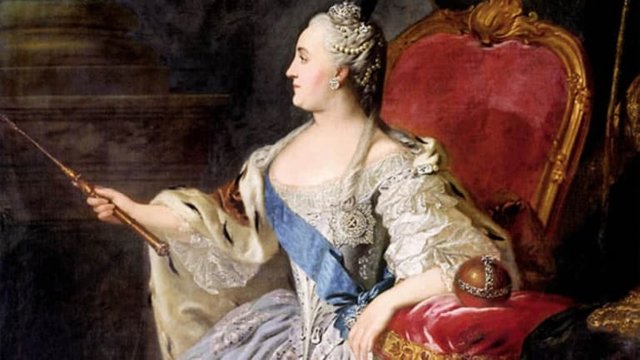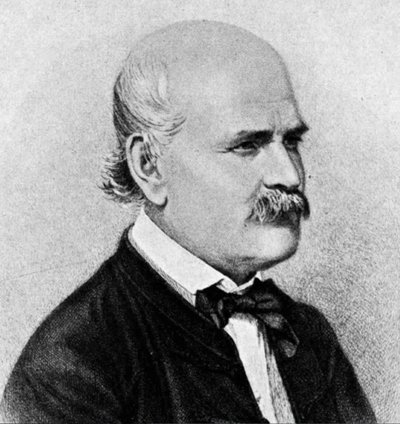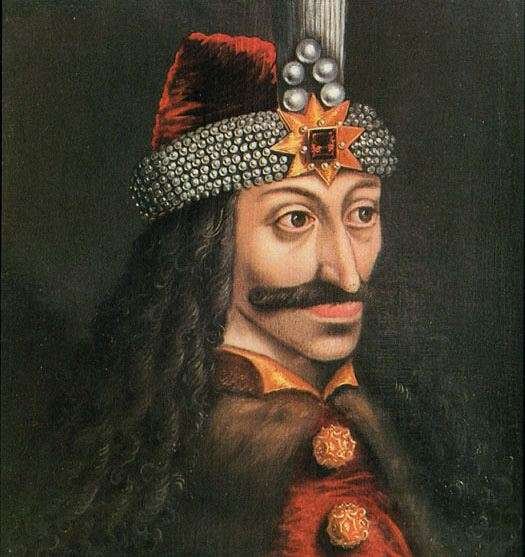ADSactly History - Wrongfully Maligned Figures in History (Part 3)
ADSactly History - Wrongfully Maligned Figures in History (Part 3)

Hello once again, @adsactly readers and welcome back to our Top 10 Wrongfully Maligned People in History.
We've looked at interesting,famous characters such as Galileo Galilei, Richard III and Lucrezia Borgia and now, it's time to head on to our last three contenders for the title.
As I mentioned in the first two posts, these characters should be viewed in regard with the age they lived in. You can't really judge someone from 300 years ago by what you consider good or bad today. I mean, who knows how we will be judged in 400 years?
With that in mind, let's move on to our remaining 3.
3. Catherine the Great
As you might expect, she wasn’t called “the Great” for nothing. Catherine, or Ekaterina, was an exceptionally clever woman and a highly skilled ruler. She was very knowledgeable about science and the arts (she carried a very long correspondence with the French writer Voltaire, among others) and she understood foreign policy and government very well.
She ruled for over thirty years and under her, Russia saw an incredible growth, reaching one of its’ most powerful moments in history. She defeated the Turkish army (twice!), which heavily out-numbered the Russian troupes, and annexed present-day Ukraine. She also defeated the Persians, built several new cities and sponsored several artistic endeavors, such as Diderot’s famous Encyclopedie, which was, according to the French government, “irreligious”.
She was a highly enlightened monarch, yet she is only remembered as a harlot, because it’s an easy accusation to throw at women. She did have several lovers and it is likely that her successor, Paul I (Pavel), was fathered by one of those lovers and not by her husband at the time, the future Emperor Peter III (whom she overthrew and assassinated, since he promised to be a disastrous ruler).

Catherine on the balcony of the Winter Palace on the day of the coup (1762) Image
But this was common for rulers, both the overthrowing and the affairs. Most kings and emperors took lovers in their time and it never stopped people referring to them as good monarchs. Catherine was seen as perverted simply because she was a woman. A lot of the nasty rumors about her sexual life were spread by her enemies, of which there were many, and possibly by the Orthodox Church itself, since Cahterine nationalized most of the Church’s lands and emptied most monasteries to pay for the wars.
She didn't defer to the Church as much as the priests would've liked, so they took any chance they could get to criticize her on her worldly ways. It is worth noting, I think, that this disregard for the Orthodox Church may have come from the fact that Catherine, a German princess by birth had been brought up as Lutheran.
2. Ignaz Semmelweis
One of the few members on our list not associated to some monarchy, this Hungarian physician has one of the saddest stories you’ve probably ever heard. Like Galileo, he was ridiculed throughout his life and received no recognition for his ideas.
Ignaz was an early pioneer of antiseptic procedures – he’s the guy who started telling doctors that maybe they should wash their hands between handling a corpse and delivering a baby. Would you believe it?
Semmelweis worked in Vienna General Hospital and proposed that other doctors should start washing their hands with chlorinated lime solutions. Back then, puerperal fever (or childbed fever, basically any bacterial infection of the female reproductive tract after birth) was rampant, claiming a huge number of deaths in hospitals and Semmelweis figured it out that it was because doctors weren’t washing their hands.
However, in the 1800s, doctors didn’t believe in disinfecting their hands and only laughed in his face, calling him crazy. It is said Semmelweis suffered from some mental issues in his later life, although it is unclear exactly of what. It is believed he became depressed and suffered a mental breakdown, after which he was lured to a mental asylum, where he was tied up in a straitjacket and left alone in a dark room. He suffered a severe beating by the guards at the asylum, developed gangrene and died.
Years after his death, his methods and ideas were confirmed by other scientists such as Louis Pasteur and nowadays, he is a very well-respected scientific figure.
1. Vlad the Impaler
Largely thought of as a vampire in today's Western culture, Wallachian ruler Vlad III is a fascinating mixture of truth and myth. Although he served as inspiration to Stoker’s Dracula, tales about his incredible cruelty had started circulating long before, even during his own lifetime.
While it is true Vlad was a fearsome ruler, who impaled his enemies and traitors to his country, he wasn’t a bloodthirsty madman. In fact, stories about his madness only started circulating after his imprisonment by Hungarian king, Matthias Corvinus, who more or less needed to show what a bad guy Vlad was, since he had him locked up in a dungeon for twelve years.
The stories about Vlad’s cruelty grew even more during his conflicts with the Saxons (after his release) and were largely spread by the enemy forces. Again, it was a common tactic to motivate the troops.

German woodcut showing Vlad eating his lunch while looking at some impaled people Image
Interestingly, Vlad Tepes, as he is known in present-day Romania, is largely regarded as a national hero, who only did what he did to strengthen his own government and protect his country. He is a good ruler, at least in his countrymen's eyes.
Mihai Eminescu, the most famous Romanian poet, wrote of him in his The Third Letter, urging Vlad to rise up from the grave and kill the enemies of Romania at the time:
“You must come, O dread Impaler, confound them to your care.
Split them in two partitions, here the fools, the rascals there;
Shove them into two enclosures from the broad daylight enisle 'em,
Then set fire to the prison and the lunatic asylum.”
You can see he was and is much admired in his own country and is today viewed as one of the first rulers to fight for Romanian independence. He was a strong, wise ruler, but history always seems to discredit strong people.
And thus concludes our series on most wrongfully vilified figures in the history of the world.
Once more, I urge you to drop us a comment, telling us which entry was shocking, which you kind of expected...and who you would've liked to see on here and didn't.
Thank you for reading.
Authored by @honeydue
References Catherine the Great 1 2 Ignaz Semmelweis 1 Vlad the Impaler 1

Click on the coin to join our Discord Chat

Witness proposal is here:
Go To Steem Witness Page
In the bottom of the page type: adsactly-witness and press vote.

Use small letters and no "@" sign. Or, click here to vote directly!
Thank you!



I like so much this type of stories! Please, write more! Maybe about poets and writers, their "madness" that wasn't true or something like that.
Posted using Partiko Android
Thank you, I'm glad you like it. It's my kind of story too. That's actually a really interesting idea. I'll think about it. Thanks! :)
The story of cruelty or sad story makes us always have an effect on our memories. Like the story that you bring to post this time makes us always look at ourselves and around us. I see what leaders like Catherine appear as a soul rebellion of a woman who does not want to be oppressed by the power of men or even the power of a state rule. then he dared to take steps that were beyond the social logic of the Russian community at that time. this makes him a character who will later be remembered as the great. I think this great expression can be a satire for the power that he runs. the story of Vlad the Impaler also becomes a mirror for us so that the journey of life that befell the people of that time will not happen to us.
Likewise the sad story of Ignaz in searching for a point of truth that must end with a sad story like Galileo, certainly gives us confidence that we must continue to fight for a truth.
Thank you @honeydue
Thank you @adsactly
thank you steemit
Warm regard from Indonesian
Again, grateful for your pleasantly written informative post, @homeydue. I didn't know Semmelweis; his story is very interesting but pathetic.
Catalina, like others included in your post (e.g. Vlad) is a very attractive historical protagonist, so much so that she has become a character in novels and fiction films. Among her lovers is said to have been a Venezuelan official, Francisco de Miranda. As you say, it happens with women who have assumed decisive roles that are subjected to falsehoods and manipulations.
In the case of Vlad the Impaler, I believe that he will be one of those who will always be accompanied by uncertainty and mystery; and it couldn't be any other way, since he is the historical figure who inspired the character of Dracula.
Greetings.
Too bad this series has come to an end, @honeydue. In this part I didn't know the story of Ignaz Semmelweis and Vlad the Impaler. Thank you for bringing them and making them known. I am disturbed by the story of Ignaz Semmelweis. It worries me that even today many of the cures to major diseases are deceived because there is doubt about the credibility of some scientists or because some are really not interested in finding the solution. Such a simple thing as handwashing could have saved many lives. How many solutions like this will be right under our noses and we will not be applying them out of ideological blindness or professional arrogance. Thank you for this series. It was really interesting.